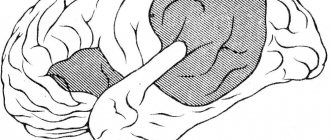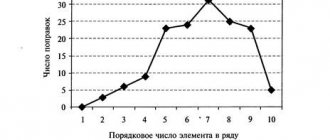Independent website about stuttering
The most important conditions for correct speech
- this is a smooth, long exhalation, clear and relaxed articulation.
Speech breathing
different from ordinary vital breathing. Speech breathing is a controlled process. The amount of air exhaled and the force of exhalation depend on the purpose and conditions of communication.
It has been established that the most correct and convenient for speech is diaphragmatic-costal breathing, when inhalation and exhalation are performed with the participation of the diaphragm and intercostal muscles. The lower, most capacious part of the lungs is active. The upper chest, as well as the shoulders, remain practically motionless.
Control correct speech breathing
Your own palm will help if you place it on the area of the diaphragm, that is, between the chest and abdomen. When you inhale, the abdominal wall rises and the lower part of the chest expands. When you exhale, the abdominal and chest muscles contract. The inhale when speaking is short and light. Exhalation is long, smooth (in a ratio of 1:10; 1:15).
During speech, the functional significance of the exhalation phase increases significantly. Before speaking, a quick and deeper breath is usually taken than at rest. Speech inhalation is carried out through the mouth and nose, and in the process of speech exhalation, the air flow goes only through the mouth. A rational way of using the air stream is of great importance for voicing a statement. The exhalation time is extended as much as the sound of the voice is necessary during the continuous pronunciation of an intonation-logically completed segment of the utterance (that is, a syntagm).
Correct speech breathing
, clear, relaxed articulation are the basis for the sound of the voice. Improper breathing leads to forced and unstable voice.
For people who stutter
at the moment of emotional arousal, speech breathing and clarity of speech are usually impaired.
Breathing becomes shallow and arrhythmic. The volume of exhaled air decreases so much that it is not enough to pronounce a whole phrase, speech is sometimes unexpectedly interrupted, and a convulsive breath is taken in the middle of a word. People who stutter
often speak while inhaling or holding their breath. There is an “air leak” - a speech inhalation is made through the nose, an exhalation immediately follows, and the speech becomes “stifled”, since only the residual air is used. The most common mistake is the predominant use of upper costal or chest breathing during speech, accompanied by a strong rise of the shoulder girdle, chest, and tension of the neck muscles, as a result of which breathing becomes noisy and tense. Therefore, when eliminating stuttering, there is a need to specially organize and develop speech breathing.
Speech breathing is considered incorrect if the following errors are detected: • raising the chest upward and drawing in the abdomen while inhaling; • inhale too much; • increased breathing; • shortened exhalation; • inability to add air unnoticed by others; • incorrect posture.
Povarova I.A. Correction of stuttering in games and trainings
This is interesting:
Manifestations of stuttering
In its manifestations, stuttering is a very heterogeneous disorder. It is naive to believe that it concerns only speech function. In the manifestations of stuttering, attention is drawn to disorders of the nervous system of stutterers, their physical health, general and speech motor skills, speech function itself, and the presence of psychological characteristics. The listed deviations in the psychophysical state of children who stutter manifest themselves differently in different cases. Nevertheless, one is closely connected with the other, feeds each other, and the complication of one of the listed deviations inevitably aggravates the other. Therefore, when eliminating stuttering, it is necessary to influence not only the speech of the stutterer, but also his personality and motor skills, nervous system and the body as a whole. In our country, influencing different aspects of the body, speech and personality of a stutterer using different means is called a comprehensive therapeutic and pedagogical approach to overcoming stuttering.
read more
Psychological characteristics of people who stutter
According to R.E. Levina, there is no speech disorder in itself; it always presupposes the personality and psyche of a particular individual with all its inherent characteristics. The role of speech deficiency in the development and fate of a child depends on the nature of the defect, its degree, and also on how the child relates to his defect. Understanding their speech defect, unsuccessful attempts to get rid of it on their own, or at least to disguise it, often give rise to certain psychological characteristics in people who stutter: shyness to the point of timidity, a desire for solitude, fear of speech, a feeling of oppression and constant worries about their speech. Sometimes it’s the other way around: disinhibition, ostentatious looseness and harshness.
read more
System and technologies of correctional work to overcome stuttering: Formation of phonation (speech) breathing
Speech breathing is voluntary and differs significantly from breathing at rest - physiological breathing outside of speech. The most favorable conditions for the functioning of the vocal apparatus are created with lower costal breathing, when inhalation and exhalation are performed with the participation of the diaphragm. Your own palm will help you control correct speech breathing if you place it on the area of the diaphragm, that is, between the chest and abdomen. When you inhale, the abdominal wall rises and the lower part of the chest expands. When you exhale, the abdominal and chest muscles contract. Diaphragmatic breathing is performed against the background of muscle relaxation. Exercises begin in a lying position. In the future, it is advisable to train the diaphragmatic type of breathing when performing physical exercises (walking, bending the body, etc.). Paradoxical breathing exercises by A. N. Strelnikova, where attention is paid to short inhalations, are used quite successfully in working with people who stutter. At the same time, when working with people who stutter on speech breathing, their main attention and instructions should concern exhalation. read more >>
System and technologies of correctional work to overcome stuttering: Regulation of emotional and muscular state
Teaching relaxation skills begins with exercises that allow the child to feel the difference between tension and relaxation. It is easier to feel the tension of the muscles in the arms and legs, so before relaxing children are asked to strongly and briefly clench their hands into a fist, tense the muscles of the legs, etc. Such exercises are given in the following sequence: for the muscles of the arms, legs, the entire torso, then for the upper shoulder girdle and neck, articulatory apparatus.
read more >>
Muscle relaxation
Most people who stutter experience feelings of anxiety, uncertainty, and fear in the process of verbal communication. They are characterized by an imbalance and mobility between the processes of excitation and inhibition, and increased emotionality. Any, even minor, stressful situations become excessive for their nervous system, cause nervous tension and intensify the external manifestations of stuttering. Many people who stutter are known to speak freely when they are calm. A state of calm is mainly ensured by general muscle relaxation. And vice versa, the more relaxed the muscles, the deeper the state of general peace. Emotional arousal weakens with sufficiently complete muscle relaxation.
read more >>
‹ Breathing exercises Up The importance of intonation for the formation of expressive speech ›
Stage IV. Development of speech breathing.
The stage lasts 10 weeks and includes a set of exercises aimed at developing exhalation, during which the child pronounces individual words, short phrases, and short lines of poetry in a sequential manner.
For example: An inhalation is performed and as you exhale, a chant is pronounced, the syllable “stretches” - WE, FOR, ZI, ZO, ZHA, etc. Then another inhalation was performed and as you exhaled, a word formed on the basis of the syllable was pronounced: (MY-LA, MY-LO, ZI-NA, ZO-YA, ZHA-LO, ZHA-BA, etc.). Instructions: “Now you and I will turn into wizards. First we will pronounce magic syllables, and since... If the syllables are magical, then words will grow from them, which we will also pronounce. Listen to how I can do it.” The speech therapist inhales with a simultaneous quick upward movement of the hand and, as you exhale, chants the syllable: MA-A-A along with a downward movement of the hand. Then he inhales again along with the movement of his hand up, and as he exhales he chants the word: MA-A-MA-A and lowers his hand down. “And now together.” The speech therapist, by moving his hand up, helps to take a breath before pronouncing the syllable and word, and by slowly moving his hand down, pronounce them in a chant.
Another example of exercises at this stage: Inhale and, as you exhale, pronounce a phrase consisting of 2 words: from the word just spoken and a new one: MAMA SOAP (MILA SHILA, MASHA EATED, POLYA PILA, etc.). Instructions: “First we will pronounce one word, and then, adding a second word to it with a “train”, we will get a sentence, which we will also pronounce immediately together with the first ones, like a train with a trailer that are traveling together. Watch and listen to how I can do it.” The speech therapist inhales along with an upward movement of the hand, and as he exhales chants the word: MA-A-MA-A with a downward movement of the hand. Then he inhales with an upward movement of his hand and, as he exhales, also chants with a simultaneous downward movement of his hand: MA-A-MA-A WE-Y-LA-A. "And now - together."
The experimenter first pronounces each subsequent word and two-word phrase himself and then together with the children.
Subsequently, the speech task becomes more complicated and becomes first three-word, then four-word. Before the instructions, repeat the previous exercises. A third word is added to repeated two-word phrases. Instructions: “And now we will attach new trailers to the locomotive.” The experimenter draws a diagram, naming each “car” word: “Mom” “Soap” “Mila”. “Now let’s say it together.”
Similarly, a four-word phrase was composed and pronounced: MOTHER WASHED MILA WITH SOAP, MOTHER SEWED A DRESS FOR A DOLL, ZOYE HAS A TEETH HURT, etc.
Let's sum it up
Breathing exercises for stuttering are not a rational, logical and ineffective way to correct the speech of a stutterer for the better. Maximum normalization of speech is not achieved with the help of some unnatural exercises and “crutches”.
A person who stutters does not need to work on developing breathing. Yes, there should be some work done on this topic, but it has nothing to do with the well-known “breathing development for stuttering.” There is no need to develop anything. A person already has absolutely everything. Set up all mechanisms correctly and secure them. We start with thinking, and then everything will happen naturally, easily, and your stuttering will remain a thing of the past.
Stage V. Development of speech breathing during the implementation of complex speech tasks.
The task of this stage is to train speech exhalation when pronouncing a prose text. The stage lasts 5 weeks.
Example exercise: The speech task consists of pronouncing two phrases of a prose text that are not united by rhythm and rhyme: THIS IS AN ORANGE. IT'S ROUND AND ORANGE. A diagram of these two phrases is drawn on the board. Instructions: “Look what I have in my hands.” Correlating each word with the diagram, the experimenter pronounces two phrases, quickly raising his hand and inhaling between them, “Now let’s say it together.”
Further, the speech task becomes more complicated. The two phrases of the previous exercise are joined by a third phrase: THIS IS AN ORANGE. IT'S ROUND AND ORANGE. IT'S ALSO JUICY AND SWEET. Instructions: “And now we will further tell you about the orange. Correlating each word with the diagram, the experimenter pronounces three phrases, quickly raising his hand and inhaling between them. “Now let’s say it together.”
So, for clarity, the main stages, their duration and tasks are reflected in the table.










